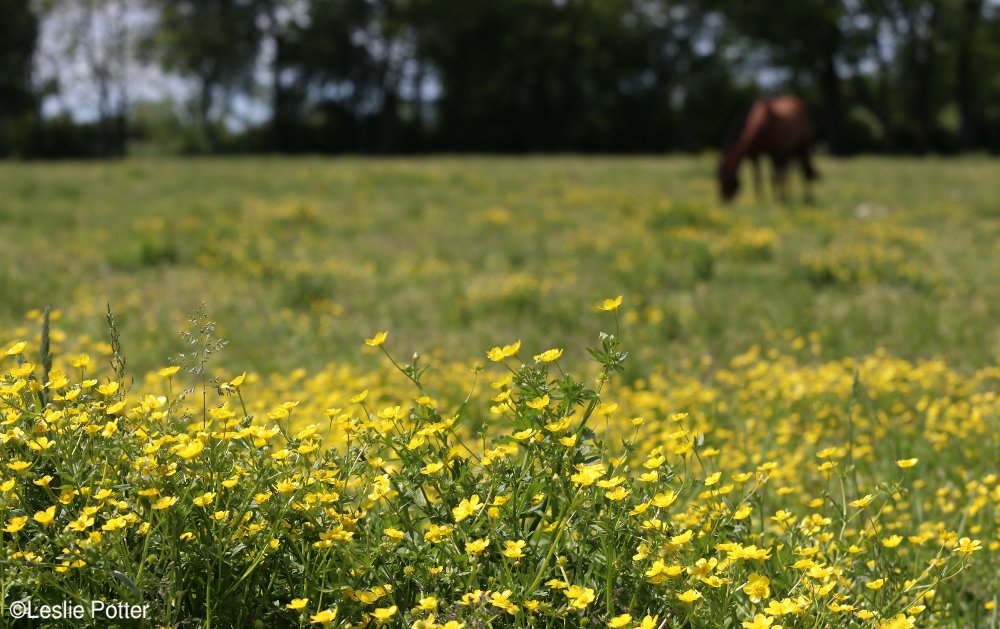When you’re out driving through the countryside in the spring, a pasture full of yellow buttercups can be a lovely sight. When that field is your horse’s pasture, however, all those yellow buttercups can be a stress-inducing vision to behold.

Buttercup Management Practices for Horse Pastures
The best way to control buttercups is to think ahead and start managing your horse pastures months before buttercups appear and bloom in the spring season. Buttercups can take hold in bare spots in the field. Seeding your pastures, particularly those bare spots, with a variety of grass that thrives in your area, is the best ways to keep buttercups and other undesirable weeds at bay.
Also Read: Leading the Way to Greener Pastures
Overgrazing is the root cause of the buttercup problem for many horse farms. Before the grass gets grazed down to the ground, move your horses to a different field or use temporary fencing such as electric tape to section off rotating parts of the pasture to let the grass recover.
According to University of Maryland Extension, buttercup seeds germinate in late fall, so by keeping the grass in your pastures healthy throughout the summer, you’ll likely have less of a buttercup problem next year.
Keeping fields mowed won’t eliminate buttercups. However, mowing your pasture early in the buttercup bloom can help prevent them from spreading by reducing the amount of new seed produced.
Chemical Control
There are herbicides that can be used to get rid of buttercups in horse pastures. The ideal time to spray them is in early spring, before the buttercup bloom but after the average daytime temperature has reached 60 degrees. University of Maryland Extension offers some examples of commercial herbicides that are effective against buttercups: Banvel, Clarity, Crossbow, Forefront, Milestone, and Surmount. However, many of these products will kill legumes, such as clover, which means you may be sacrificing some of the good grazing along with the bad.
Also Read: How to Revitalize Drought-Stricken Pastures
Always check labeling to make sure you understand how the herbicide you’re using will affect grazing or haying. Consult your local extension office for additional guidance on what the best management practices are for your geographic area.
Key Takeaways
From this article, you should now understand how to get rid of and manage yellow buttercups in horse pastures.
This article about management of buttercups in horse pastures originally appeared in Horse Illustrated magazine. Click here to subscribe!





